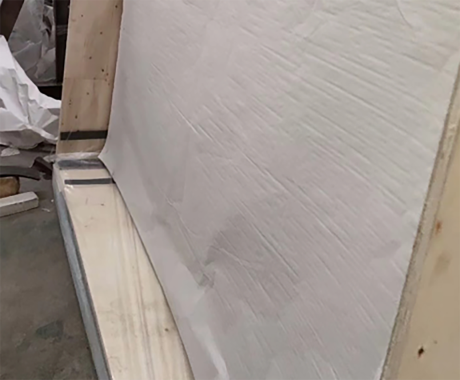

The Wonders of Float Annealed Glass A Comprehensive Overview
Float annealed glass, a widely used product in the glass industry, is renowned for its clarity, uniformity, and versatility. This type of glass is crafted using a meticulous process that not only enhances its aesthetic appeal but also significantly influences its functional properties, making it a popular choice for various applications in architecture, automotive manufacture, and interior design.
Understanding the Manufacturing Process
The float glass process, developed in the 1950s, is the foundation for creating float annealed glass. This method involves melting raw materials, such as silica sand, soda ash, and limestone, at extremely high temperatures (around 1,700 degrees Celsius). Once melted, the molten glass is poured onto a bed of molten tin. This unique technique enables the glass to spread out and flatten on the tin’s surface, forming a smooth and even sheet. The result is a glass with exceptional optical clarity and a minimal distortion factor.
Following the cooling process, the glass then undergoes annealing. Annealing refers to the slow cooling of glass to relieve internal stresses formed during the manufacturing process. This step is crucial because it enhances the durability and strength of the glass, allowing it to withstand various stressors without breaking easily. Annealed glass is particularly valued for its robustness, making it a preferred choice in many scenarios.
Applications of Float Annealed Glass
The versatility of float annealed glass is one of its greatest strengths
. In architecture, this glass is commonly utilized for windows, facades, and glass doors. Its superior transparency allows natural light to illuminate interior spaces while providing an unobstructed view of the outside environment. Additionally, architects appreciate the flexibility of float glass, as it can be easily cut and shaped to fit different designs and structures.
In the automotive industry, float annealed glass is utilized for windshields and side windows due to its clarity and structural integrity. The glass enhances visibility while offering essential protection to passengers. Furthermore, the process of laminating float glass with additional layers allows for improved safety and reduces the risk of shattering upon impact.
In interior design, the aesthetic qualities of float annealed glass make it an attractive choice for partitions, furniture, and decor. Designers often use this glass to create stylish and modern environments, relying on its reflective properties to enhance the overall look of a space. The glass can be treated with a variety of finishes, including tinting and coating, which opens the door to endless design possibilities.
Advantages of Float Annealed Glass
One of the primary advantages of float annealed glass is its affordability compared to other types of glass. The manufacturing process is efficient, making it a cost-effective option for large-scale projects without compromising quality. Additionally, the smooth surface of this glass makes it easy to clean and maintain, further contributing to its popularity.
Another noteworthy feature is its environmental impact. Floating glass can be manufactured using recycled glass, promoting sustainability. The process generates minimal waste, and the resulting product is fully recyclable at the end of its life cycle, making it an eco-friendly choice for environmentally-conscious consumers and builders.
Conclusion
Float annealed glass stands out in the glass industry for its combination of beauty and functionality. Its manufacturing process not only results in a high-quality product but also ensures that it possesses properties desirable across various fields. Whether it’s reflecting sunlight through a skyscraper window or providing clarity for a vehicle’s windshield, float annealed glass serves vital roles while also contributing to modern design aesthetics. As technology progresses, the applications and enhancements of this remarkable glass will continue to expand, ensuring its relevance for years to come.